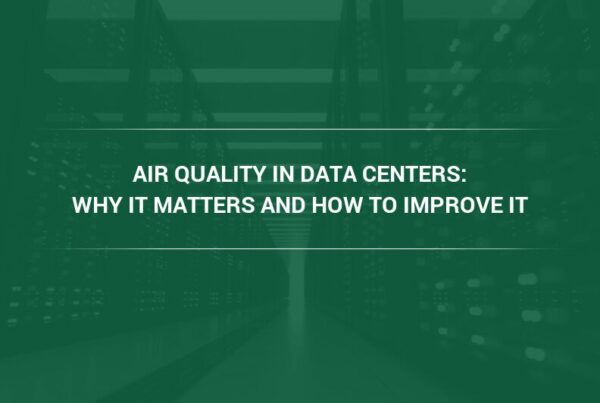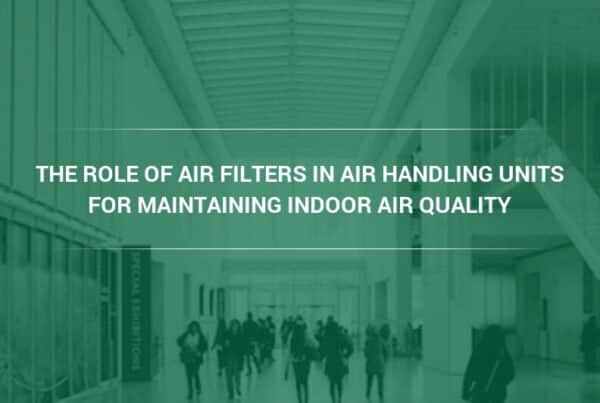Automotive manufacturers are constantly striving to improve fuel economy by using a variety of cutting-edge technologies aimed at reducing CO2 emissions and achieving performance targets. According to the U.S. Environmental Protection Agency (EPA), in model year 2023, the combined category of electric vehicles, plug-in hybrid vehicles, and fuel cell vehicles produced for sale in the U.S. reached 12%, up from 7% in 2022. Industry experts predict that this upward growth trajectory will continue as EV production rises in the coming years.
While EV progress is beneficial to reducing automotive emissions, the process of manufacturing EV batteries can generate harmful pollutants. Manufacturers must address air quality challenges to ensure they meet OSHA and EPA requirements and maintain proper cleanliness in manufacturing.
Air Quality Concerns in Lithium-ion Battery Cell Manufacturing
The majority of electric vehicles are powered by lithium-ion batteries. These batteries are composed of highly hazardous substances. The cathode is usually made from a combination of lithium, nickel, manganese, and cobalt, while graphite is used for the anode. Lithium salt serves as the organic solvent. The active materials in the battery electrodes, like graphite or lithium cobalt dioxide, are processed in a powdered state, which can produce sub-micron airborne particles.
The production of lithium-ion battery cells involves several steps, including the coating of anodes and cathodes, slitting, stacking, assembling the battery cell and filling with electrolytes. These procedures must be performed in clean and humidity-regulated environments to safeguard the product and workers from airborne pollutants. Equipment and components must be in place to capture particles and smoke generated during these production phases.
In addition, before lithium-ion battery packs can be used in vehicles or other applications, they must undergo and pass safety standard testing and approval. These processes involve electrical, mechanical, and thermal stress tests that could cause the battery to combust, emitting a significant amount of toxic smoke and particles. Again, it is necessary to have effective air filtration and dust/fume control systems in place to protect personnel and the facility.
“Because some of the particulate and gases generated in the production process are potential health hazards, plants must meet OSHA, EPA, and NIOSH requirements for indoor air quality to protect employee health,” said Charles Barman, E-Mobility Segment Manager at Camfil. “Decision-makers in plant, operations and environmental health & safety, as well as facility design engineers, are key to specifying, acquiring, installing and maintaining the systems to ensure safe indoor air quality.”
Importance of Protecting Battery Processes and Products from Airborne Particle Contamination
Different types of lithium-ion batteries employ different chemistries, leading to variations in performance, cost, and safety traits. Within a lithium-ion battery cell, separators are used to prevent contact between the anode and cathode, also known as the positive and negative poles. If a metallic particle breaches the separator, it could cause a short circuit.
Maintaining high air quality during manufacturing can mitigate this costly contamination, enhance production yield, and ensure the final product meets high-quality standards. In the case of lithium-ion battery cells, clean components make up 85% of the cost of materials used in the pack process. By minimizing contamination throughout the manufacturing stages, the yield can be significantly improved. Without proper control of contamination levels, the yield could potentially drop by 50%.
Particle contamination poses a significant challenge for lithium-ion battery manufacturers. Miniscule particles lodged between the interfaces of the electrode and separator have been linked to battery fires and explosions. Other consequences include poor performance, material defects, product recalls, and overheating.
The electrode-cutting stage, where the anode and cathode electrode layers are trimmed before rolling or stacking, is a major source of particle contamination. During this process, fragments of lithium, carbon and other electrode-coating materials tend to peel off from the edge.
To mitigate these risks, it’s imperative to implement effective measures such as air filtration or dust extraction to remove contaminants. Dust collectors play a crucial role in maintaining an ultra-clean environment that is essential for preventing defects and ensuring high-quality products. Operating continuously, dust collection systems use sophisticated filtration techniques to securely capture and contain airborne pollutants. They significantly reduce airborne particles and prevent dust from accumulating on surfaces, thereby minimizing the risk of contamination.
Dust Collection and Air Filtration Solutions for EV Battery Manufacturing
Lithium-ion battery cell manufacturing involves multiple stages conducted within clean and dry rooms, based on the airborne contaminants produced. It’s vital to capture, contain and capture these contaminants before they enter the ambient air. As manufacturers of EV batteries scale up production at existing facilities or establish new ones, they must plan for air filtration and dust collection. With its practical experience, comprehensive solutions, and wide range of products, Camfil is equipped to assist EV battery manufacturers with air filtration needs in all stages:
Dust collection
Manufacturers of EV batteries use dust collection systems to safeguard workers from hazardous dust, prevent product contamination, keep harmful particles and fumes from settling on surfaces, and adhere to safety regulations and standards. Cartridge-style dust collectors operate by continuously pulling in large amounts of air to remove impurities produced during manufacturing processes. The polluted air enters the collector via a baffled inlet, passes through filters, and is captured in the filter media.
The filtered air is either redirected back into the facility or vented outside. Over time, the dust build-up on the filter media creates resistance and obstructs airflow. To resolve this problem, the system uses a pulse-cleaning technique that directs a surge of compressed air through the filter’s core to dislodge the dust and eject it into a hopper.
Dust collection systems need to be appropriately designed and tailored for each unique process and type of dust. Proper maintenance is crucial to prevent system failure and the release of trapped pollutants into the environment. Regular and correct filter replacement is essential. In some cases, a bag-in/bag-out (BIBO) system might be necessary for safe filter changes. This system not only safeguards maintenance staff from exposure but also prevents dust from re-entering the processing area.
Camfil’s high-performance Gold Series dust collection system with high-efficiency filter cartridges is ideal for EV battery manufacturing facilities. High-efficiency filter cartridges are generally required in battery manufacturing applications that use specific filter media. For example, HemiPleat eXtreme filter cartridges, which use blended cellulose and polyester fiber media that is coated with nanofibers for superior dust release, are well-suited to capture dusts from all stages of the battery chemistry mixing and production process.
Molecular air filtration
Molecular filtration plays a significant role in maintaining ultra-clean indoor air quality in EV battery manufacturing facilities. Even the most advanced particle air filters can’t eliminate gases and vapors, as these are extremely small molecular pollutants.
If not captured from the air, airborne molecules can cause a variety of issues, from unpleasant odors to decreased production yields, and damaged products and process equipment. Moreover, they can pose significant health effects.
Molecular filtration is an effective method of controlling harmful gas and vapor pollutants. Molecular filters are used in indoor recirculation systems to mitigate internally generated pollutants. They are also used in outdoor air systems (also known as make-up air systems) to prevent pollutants from entering the facility.
Camfil molecular filters are designed to remove molecules, gases and vapors. These molecules are typically 1,000 to 10,000 times smaller than the particles that can pass through HEPA and ULPA filters. All Camfil molecular filters employ a process called adsorption, which essentially traps molecules onto a large surface area of filter media material, such as activated carbon or alumina. Molecular filters are often used in tandem with HEPA filters as part of a comprehensive air filtration system.
In addition, Camfil’s molecular air filtration products are tested according to ISO 10121, which provides test methods for determining the filtration efficiencies of molecular filter media and molecular air filters against different gases. Alternatively, they may be tested using ASHRAE 145.2, a laboratory test method for assessing the performance of gas-phase air cleaners and air cleaning devices.
Air handling in EV facilities
EV battery production facility operators must uphold stringent standards, including maintaining ultra-low humidity and clean room environments. If plant operators do not properly control humidity, it can cause defects, which as previously mentioned, can decrease product lifespan and performance, cause overheating, and even ignite in extreme cases.
Manufacturers operating under strict quality requirements including clean rooms use HEPA and ULPA particle air filters in HVAC and air handling systems. HEPA, or high-efficiency particulate air filters, can capture a minimum of 99.97% of particles as small as 0.3 microns. ULPA, or ultra-low penetration air filters, are even more efficient than HEPA filters and can capture a minimum of 99.9995 percent of airborne particles that are 0.12 microns or larger.
Camfil’s Megalam high-efficiency, energy-saving HEPA and ULPA filter panels are specially made for turbulent and laminar airflow applications in high-tech cleanrooms, clean benches and clean air devices. Megalam air filters can capture 99.5% to 99.999995% of the most penetrating particle size (MPPS) of .1 to .3 microns. Particles of this size particle can penetrate further into filter media more than any other particulates.
Economic and Environmental Impact: Cost Benefits of High-Quality Clean Air Systems
The energy cost necessary to maintain the clean and dry environment required for EV battery manufacturing significantly influences the overall manufacturing expenses. EV battery factories are typically expansive, ranging from 500,000 to 2 million square feet, and they recirculate 90-95% of the air. These factors contribute to substantial energy usage. Moreover, this high energy consumption adds to the facility’s total carbon footprint. Therefore, it’s essential to integrate systems and equipment that can help decrease energy consumption.
HVAC systems can constitute over half of a manufacturing facility’s total energy use, with air filters accounting for 30% of this consumption. By employing efficient dust collection and air filtration systems that use less energy and allow for cost-effective air recirculation, operators can reduce these expenses.
Selecting the optimum dust collection and air filtration systems requires a thorough evaluation by experienced air quality professionals. When it comes to buying dust collector filters and air filters, it’s important not to base the decision solely on the initial purchase prices, as these unique products have distinct lifetime operational costs.
Instead, prioritize the total cost of ownership, which includes factors such as energy consumption, lifespan, maintenance requirements, disposal costs, and the overall impact on the dust collection or HVAC system. Understanding these aspects can result in significant long-term savings and more informed decision-making.
Prioritizing Indoor Air Quality in EV Battery Manufacturing
It’s vital to grasp the operational mechanics and the emissions produced by EV battery production machinery, which is often custom-built for this emerging industry. By comparing this information with the performance attributes of Camfil’s clean air solutions for EV battery plants, we can assess whether the entire process meets or surpasses local health, safety, and environmental regulations and standards. Just as crucial as this initial validation is the ongoing monitoring of the production process. The only way to guarantee that workplace exposure limits are not breached is to ensure that the machinery on the production lines and the extraction and ventilation systems are functioning correctly.
Camfil experts are on hand to assist EV battery plant operators, EHS personnel, design engineers, and other decision-makers protect their people, products, and equipment from harmful dust, fumes, vapors, and gases.
² https://www.camfil.com/en/insights/dust-fume-and-mist-extraction/emobility
³ https://www.camfil.com/en-us/industries/transportation/e-mobility-battery-cell-plants
⁴ https://www.swirvisionsystems.com/battery-inspection/
⁵ https://www.e-motec.net/contaminant-free-ev-battery-manufacturing
⁶ https://camfilapc.com/blog/battery-manufacturing/
⁷ https://camfilapc.com/blog/battery-manufacturing/
⁸ https://www.assemblymag.com/articles/98012-battery-plant-design-dos-and-donts
⁹ https://www.camfil.com/en/products/epa-hepa-and-ulpa-filters



